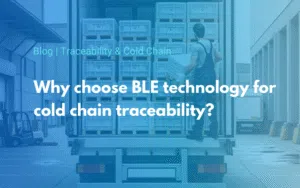
The Internet of Things (IoT) is booming, with billions of connected devices expected by the end of the decade. However, this proliferation poses a major challenge: how can all these devices be powered sustainably and efficiently?
The answer may lie in energy harvesting, a process that collects energy from the environment to power electronic devices. This article explores how energy harvesting can revolutionise the IoT, by ensuring a continuous and sustainable power supply.
What is energy harvesting?
Energy harvesting refers to all the methods used to collect small quantities of energy from environmental sources such as light, heat, vibrations, radio waves or movement. Unlike traditional systems powered by batteries or the electricity grid, the energy harvested is stored directly or used to power low-consumption devices.
How does an IoT sensor work thanks to energy harvesting?
The operation of an IoT sensor powered by energy harvesting is based on a number of key stages involving the collection, management and use of energy to ensure its functioning. Here’s an overview of how it works:
1. Energy collection
The sensor incorporates an energy recovery module designed to capture environmental energy from one or more sources:
- Solar energy: Photovoltaic cells capture ambient light, often used for outdoor collectors.
- Vibratory or mechanical energy: A piezoelectric device converts vibrations into electrical energy, for example from machines in operation.
- Thermal energy: A thermoelectric generator converts a temperature difference into an electric current.
- Electromagnetic energy: Antennas capture radio wave energy (Wi-Fi, RF) and convert it into electricity.
2. Energy storage and management
The energy recovered is generally small and fluctuates. It is therefore stored in a low-capacity device such as :
- A supercapacitor for fast, short discharges.
- A small rechargeable battery to store energy for longer periods.
A Power Management Unit (PMU) regulates this energy, ensuring that it is stored optimally and delivered efficiently to the sensor components as required.
3. Duty Cycling
- Sleep Mode: The sensor remains inactive to save energy.
- Periodic wake-up: When sufficient energy has been accumulated, the sensor wakes up to perform its tasks.
- Prise de mesure : Le capteur collecte les données (par exemple, température, vibration, qualité de l’air).
- Processing and communication: Data is processed locally and then transmitted to a gateway or remote server via a low-power communication protocol (such as LoRa, Sigfox, Zigbee).
- Return to standby mode: Once the tasks have been completed, the sensor returns to standby mode to save energy.
4. Energy optimisation
To maximise efficiency, the sensor uses components optimised for low power consumption:
- Ultra-low-power microcontroller: The microcontrollers (MCUs) used in these devices are designed to consume the minimum amount of energy in active mode and even less in standby mode.
- Low-energy communication modules: The wireless technologies used are those that consume as little energy as possible (BLE, NB-IoT, LoRa), with protocols optimised for short transmissions.
The impact of energy harvesting on the IoT
Energy harvesting is a promising technology for the IoT, but it is not yet widely used, at least not across the board. Its use remains highly targeted in cases where the autonomy of connected objects is critical. Nevertheless, this autonomous power supply process has many advantages for the IoT, which should contribute to its development over the next few years.
1. Extended device autonomy
One of the main constraints on IoT devices is the limited lifespan of batteries. Energy harvesting makes it possible to increase this autonomy considerably, and even to make certain devices completely autonomous.
2. Reduced maintenance costs
Replacing batteries in IoT devices, often located in hard-to-reach places, can be costly and complex. By harnessing the surrounding energy, maintenance costs and effort are drastically reduced.
3. Applications in hostile environments
Replacing batteries in IoT devices, often located in hard-to-reach places, can be costly and complex. By harnessing the surrounding energy, maintenance costs and effort are drastically reduced.
4. Environmental sustainability
By reducing dependence on chemical batteries and harnessing renewable energy sources, energy harvesting helps to reduce electronic waste and promote greener technology.
Challenges and solutions
Despite its many advantages, energy harvesting is not without its challenges. The amount of energy recovered can be small and variable, requiring innovative solutions to store and manage it efficiently.
1. Energy storage
Supercapacitors and rechargeable batteries are used to store the energy recovered, but their capacity and lifespan need to be optimised.
2. Energy management
Sophisticated energy management circuits are needed to maximise the efficiency of the conversion and use of harvested energy.
3. Miniaturisation
Energy harvesting devices must be small enough to be integrated into IoT devices without compromising their performance or cost.

Discover our range of Bluetooth Low Energy beacons
Innovations and future prospects
Recent advances in materials and technology promise to overcome these challenges. For example, piezoelectric and triboelectric nanogenerators open up new possibilities for small-scale kinetic energy capture. Similarly, advances in flexible photovoltaic materials and thermoelectric devices offer more efficient and integrable solutions for energy harvesting.
Conclusion
In summary, energy harvesting is still a niche, but it is increasingly being explored in applications where autonomy and reduced maintenance costs are crucial. Widespread adoption will depend on technological maturity and falling costs, but current trends point to growing adoption, particularly for autonomous sensors in industrial IoT and harsh environments.






